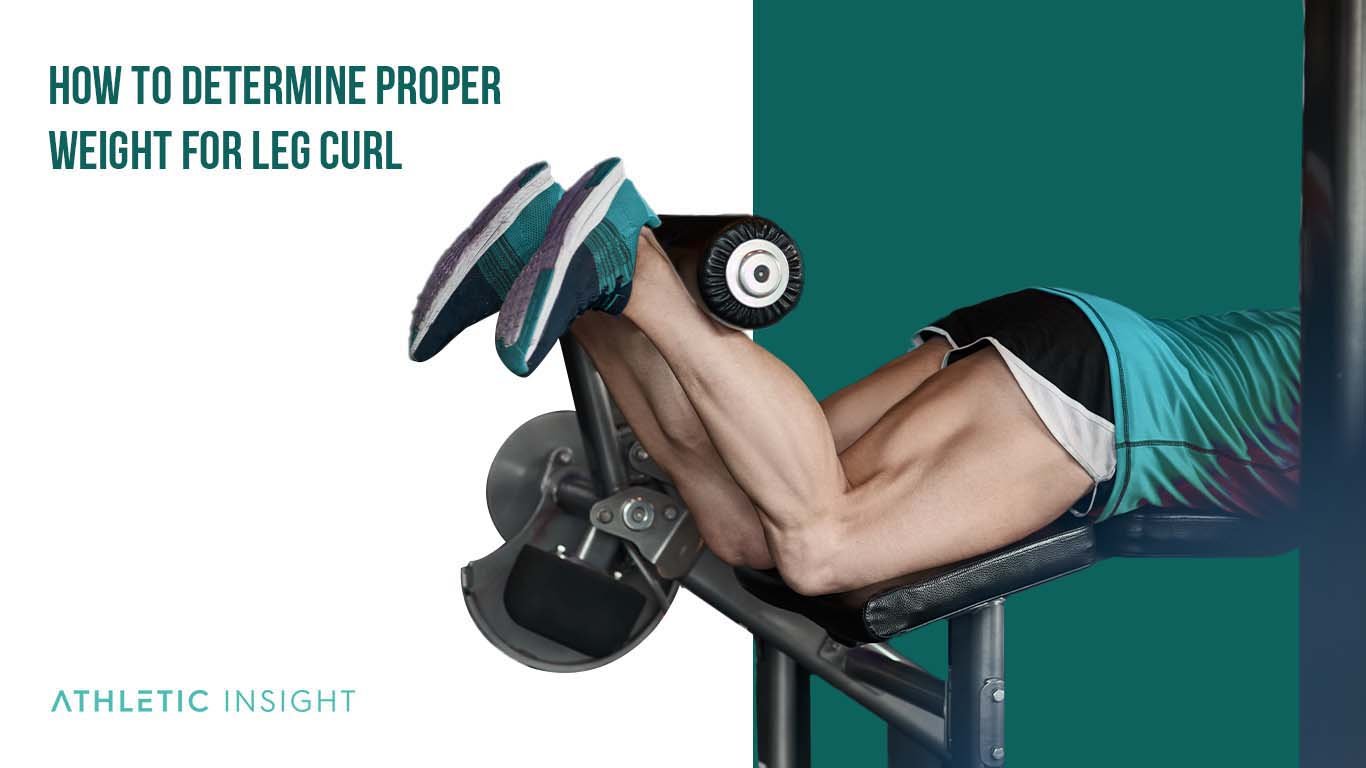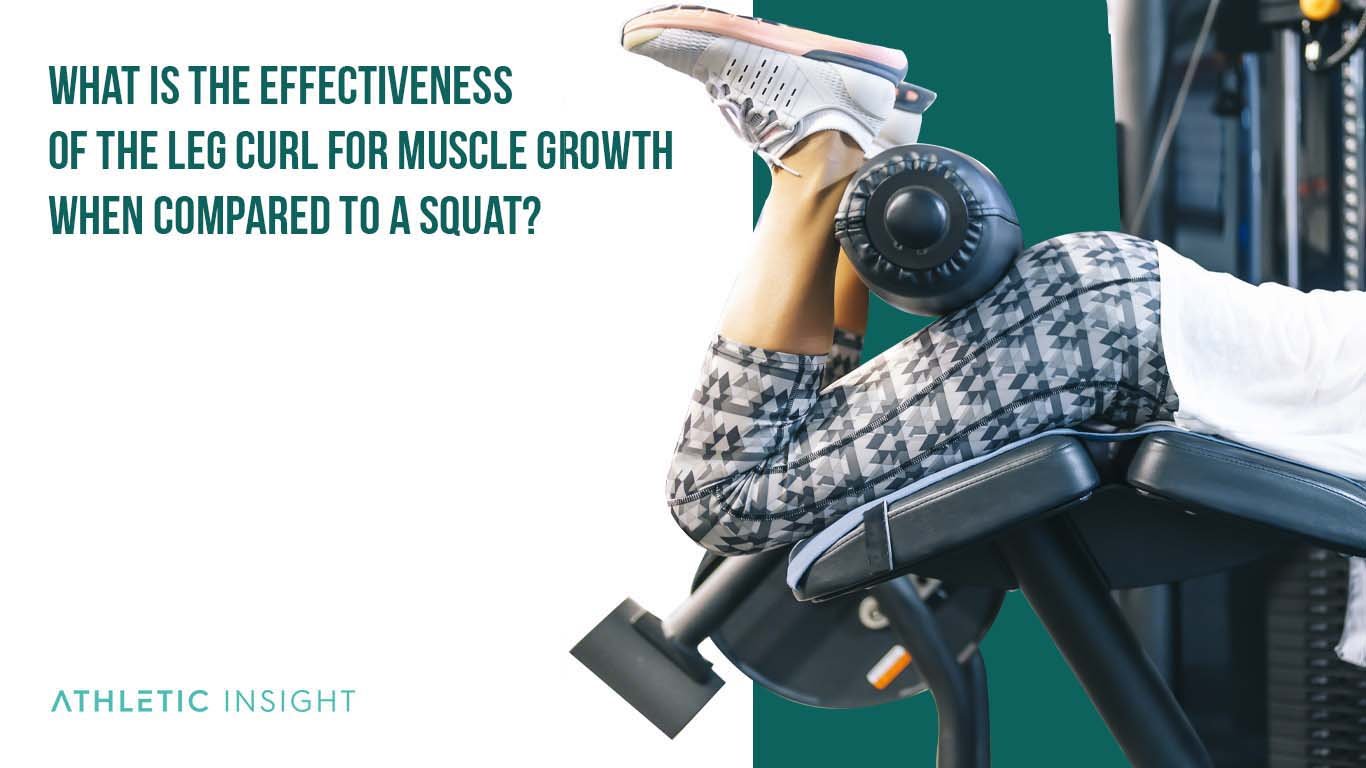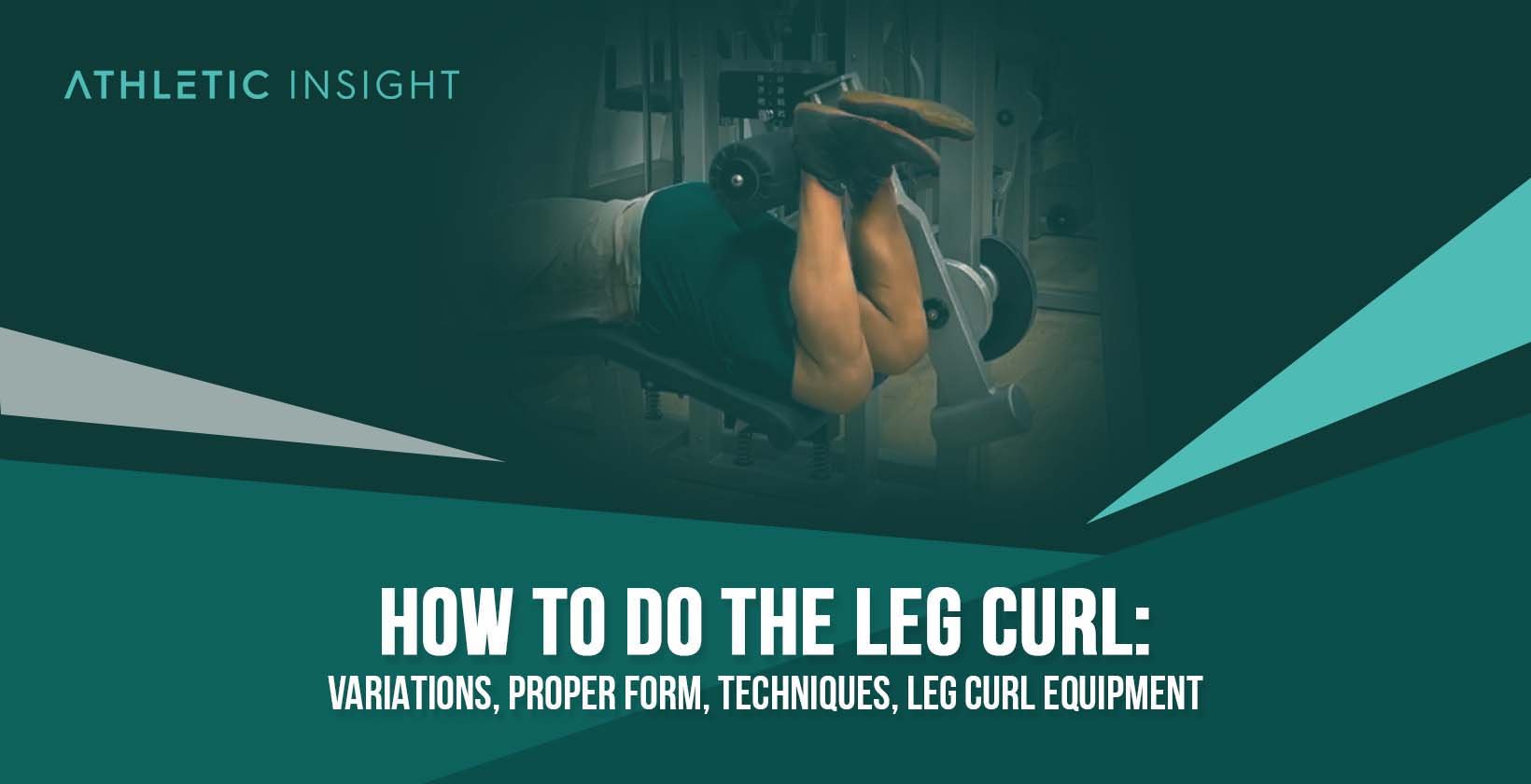The leg curl is a lower-body exercise that targets the hamstring and calf muscles. Also known as the hamstring curl, this exercise is beginner-friendly and simple to implement into a workout routine since the only equipment required is a leg curl machine or a band.
The main benefit of the leg curl is that they increase hamstring strength, and provide a great alternative to the compound lift. In order to perform a leg curl, you need to lay down on a leg curl machine and put your leg under the foam pad. Once in position, curl the weight with your legs by pulling the foam pad towards your buttocks.
As with most exercises, there are a few different leg curl types, some of these include the standing leg curl, seated leg curl, valside leg curl, and the nordic hamstring curl.
While the leg curl is a simple movement compared to a compound movement, there are some risks associated with the lift. The main risk factor of the leg curl is using improper form or using too much weight. Both of these factors pose a risk to your muscles and joints.
How to Perform a Leg Curl with Proper Form
To dominate the leg curl, you’ll need to perfect your form. Always remember to keep your head and spine straight, your hips and chest flat, and try not to use the handles to pull yourself forward with the curl. Also, be sure not to arch your back in any way as this may result in injury like most other leg exercises.
To do the leg curl properly, follow these steps.
- Lay down on the leg curl machine
- Extend your legs fully
- Put the roller pad a few inches above your calves
- Grasp the machine’s support handles on both sides
- Exhale and flex your knees
- Bring your ankles as close as possible to the buttocks
- Maintain a solid grip on the bench with your hips
- Hold for a few moments
- Inhale as you slowly release the hold
What Are the Benefits of Doing a Leg Curl?
The leg curl exercise offers many benefits.

- Targets hamstring and calf muscles.
- Lowers the feet target buttocks and thighs.
- Activates front of shins.
- Improves strength, stamina, and balance.
- Provides strength and flexibility in your muscle groups.
- Makes you less prone to injury.
1. Targets Hamstring and Calf Muscles
Strong hamstrings will contribute to increased stamina, body strength, and balance. Hamstring strength can also directly affect your performance in other sports, especially if those sports involve a lot of sprinting or running.
2. Targets Buttocks and Thighs
The leg curl is good at increasing muscle mass in your quads, which will directly impact the strength of the surrounding muscle groups, including the buttocks.
3. Activates the Front of the Shins
In addition to working the quads and glutes, the leg curl activates the tibialis anterior muscle on the front of your shin.
4. Improves Strength, Stamina, and Balance
Stronger legs, especially thighs, lead to better stamina, strength, and balance. Improvements in those areas will help you succeed in your other fitness endeavors.
5. Provides Strength and Flexibility in Your Muscle Groups
Leg curls make your leg muscles stronger and more flexible, improving overall body strength and flexibility.
6. Makes You Less Prone to Injury
Regular exercise strengthens all areas of your body, which makes you less prone to injury. Exercises that specifically target the legs, such as the leg curl, can help to prevent lifting injuries.
What Are Some Common Mistakes With the Leg Curl?
There are two main things you should try to avoid when doing the leg curl.
First, make sure you don’t set your leg pad too high. If it’s placed improperly, you could injure your Achilles and significantly reduce your range of motion.
Second, always use the proper weight. Start with a lower weight, then gradually increase as you go. This is the best way to prevent lower leg curl mistakes.
How to Determine Proper Weight for Leg Curl
Strength training varies from one person to the next, so when choosing your proper leg curl weight, you should base it on your experience and ability.

A quick and straightforward way to determine which weight you should use is to try the “one-rep max” test. The one-rep max test involves determining how much you can lift in one rep, then lowering your exercise weight by 60-80% during the workout. From there, add weight in 10-lb increments as needed.
Which Muscles Are Involved While Performing the Leg Curl?
The leg curl targets a handful of muscles, including:
- Biceps femoris
- Semitendinosus
- Semimembranosus
- Gastrocnemius
- Soleus
What Are the Leg Curl Variations?
The leg curl has a number of variations you can try if you want to change up your workout a bit.
- Standing Leg Curl: The standing leg curl is a good choice for beginners because it doesn’t require the use of weights. Instead, you can just perform the same leg curl motions while standing. Once you become more comfortable with the action, you can add weights to provide more resistance.
- Standing Leg Curl With Resistance Band: The standing leg curl with a resistance band is another good alternative if you don’t feel ready for weight. The exercise still offers the simplicity of the standing leg curl, but with the added resistance of the band to promote muscle work.
- Seated Leg Curl: Lower back pain sufferers will benefit from the seated leg curl. In this variation, you’ll sit on the leg curl machine instead of lying prone. Then, you’ll push down on the lower leg pads with your calves.
- Lying Leg Curl: The lying leg curl is similar to the seated leg curl, but the hip position allows you to focus more on your glutes and calves. This exercise is an excellent addition to squats and deadlifts.
- Valslide Leg Curl: The valslide leg curl is a lying leg curl done on the floor with the feet placed on valslides. Valslides are discs that you can put under your feet to give you an unstable exercise surface, which will require your muscles to work differently. This exercise targets the glutes, core, and calves. It should be felt mainly through your glutes and hamstrings.
- Nordic Hamstring Curl: The Nordic hamstring curl offers a twist on the standard leg curl. Instead of keeping your body still while you target your leg muscles, the Nordic curl keeps your legs still as you move your body. This exercise is done while kneeling on the floor with the feet held in place.
What Are the Phases of the Leg Curl?
The leg curl has two main phases; concentric and eccentric. Therefore, your exercise routine should focus on both of these.
- Leg Curl Concentric Phase: During the concentric phase of the exercise, you’ll lift your weight up while bending at the knee. In the case of the leg curl, the concentric phase is when you bend your knees to move the weights. This tends to be a more significant focus for some people. However, it should carry the same level of importance as the eccentric phase, so be sure to address both.
- Leg Curl Eccentric Phase: The eccentric phase is the concentric phase’s opposite. It happens when you straighten out your legs, therefore lowering the weight on the machine. This phase affects muscle growth more than the concentric phase.
- Leg Curl Joint Action Eccentric Phase: The main point of joint action during the leg curl is in the knee. As the knee bends, the muscles contract, and you’ll reenter the concentric phase.
Which Muscles Are Most Impacted During the Leg Curl?
The hamstrings, quads, and calves are the muscles most affected by the leg curl.
Of these three muscles, the rectus femoris, which is one of your four quad muscles, works hardest. This muscle runs down the front of your thigh and is engaged during both phases of the exercise.
What Is the Effectiveness of the Leg Curl for Muscle Growth when Compared to a Squat?
If you’re aiming to grow your hamstrings and quads, the leg curl shows superior levels of muscle growth when compared to squats.

In particular, the leg curl best helps build the rectus femoris – the muscle that runs down the front of your thigh. The vastus lateralis also grows more proximally to the thigh during the leg curl than during the squat.
Building these muscles makes for stronger and more toned legs. That improved leg strength will allow you to perform better squats and lift more during other exercises, too.
Does the Leg Curl Affect Your Hormones?
According to studies, resistance exercises such as the leg curl increase testosterone, free testosterone, and growth hormones.
Does the Leg Curl Increase Testosterone?
Because testosterone is found in the muscles, the increased muscle mass you achieve from doing leg curl will affect your T levels. Additionally, growth hormone is produced during leg curl exercises.
Does the Leg Curl Affect Your Mood?
There are many studies that document the correlation between exercise and a good mood. This change in mood is due to the shifting levels of serotonin and endorphins during a workout.
In addition to the natural boost in brain chemicals, leg curl exercises can increase your confidence. This boost is typically due to the feelings you get when you achieve a goal, such as weight loss or muscle growth.
And, because exercises such as the leg curl can increase your energy levels, you’ll have a better outlook on other areas of life.
Is the Leg Curl Practiced Within Crossfit?
The leg curl is a common leg exercise associated with Crossfit. In particular, the banded leg curl is ideal for Crossfit enthusiasts.
For the banded leg curl, you’ll attach a resistance band to a stationary object. Then, you’ll sit on a bench across from the object and use your feet to pull the band toward you. This exercise is a popular variation of the standard leg curl and is done without weights or a machine.
Is the Leg Curl a Military Movement?
The leg curl is a standard military exercise used to develop the upper leg muscles. Therefore, it can be worked into a standard military exercise regime.
If you’d like an exercise that targets your hamstrings, quads, and calves, the leg curl can be a great addition to leg day. Whether you’re a bodybuilder hoping to increase muscle mass or simply looking to get stronger, the leg curl can work for any exercise regimen.



